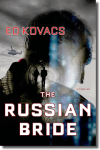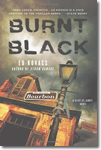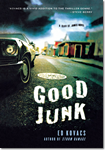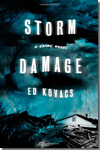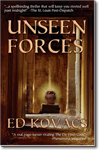Back in 2001 I started getting the germ of an idea for a story to write. The vague notion tugging at the fringes of my consciousness was like the first bubble in a pot of stew that would come to boil.
The story felt like action/adventure. No surprise there as at that point in my career I’d written at least half a dozen action screenplays, all of which had either been produced or optioned.
As the idea faucet opened wider I began to ‘feel into’ the form – was this going to be another screenplay? I’d wanted to write a novel for many years and had begun but abandoned (uncharacteristically) an earlier start on a novel.
So I was a bit leery to go the novel route, but I was tired of writing screenplays. Soon it became clear that the emerging idea was going to be my second attempt at producing a novel. A title came to me and I ended up keeping it: UNSEEN FORCES.
But I wanted to finish this one.
Having begun and completed over 30 screenplays (I’ve written 15-20 drafts of some scripts) I decided to apply my structuring techniques of crafting a screenplay to the development of the novel. Just to be clear, I wasn’t trying to write a book that had ‘movie’ written all over it. I simply needed to proceed using a system that gave me confidence I would finish what I started.
I always begin with a legal pad, jotting down thoughts, impressions, snippets of dialogue, and whatever comes up in a stream of consciousness kind of flow. No censoring of ideas at this point, it’s whatever pops into my head. I’ll see pieces of scenes in my mind’s eye and simply write down what I see. This is one of the freest, most purely creative aspects of the writing process, and although it’s hard work, it can be a lot of fun and quite fulfilling.
I cull a lot of research at this point. Thank God for the Internet and the eased burden of research. I’ll write at least five pages single-spaced of information – back story, character traits, ghost or no ghost – about each of the three or four most important characters that have emerged.
As the story starts to take form, I’ll create cards for material that feels like it might be a scene in the story. To mount the cards, I use three Styrofoam insulation boards that I get at a building supply company for about $2 each. Being so lightweight they’re easy to move around the house if I want to work in another room or outside. Using the classic three-act structure, one board represents each act, and I’ll place a card where I think it might fit in the story. It’s an incomplete jigsaw puzzle at this stage.
Since plot is so important for thrillers, the card placement helps structure the dramatics, the ebb and flow and act break crescendos. Not sure if you’re ignoring a sub-plot in act II? Run your eyes over the cards and you have your answer.
I take my time arranging and fleshing out the cards and characters. This part of the process is perhaps the most challenging: what happens when to whom and why. It’s the pouring of the foundation and erecting of the superstructure. The actual writing, once I’ve got the story mapped out, is the fun part. In a way I envy writers who can just start writing a new mystery with no idea of where it is going or how it will turn out. I might try that method sometime, but for now I chose to stick with what I know works for me.
I keep the cards mounted and handy even after I’ve roughed out a first draft, because usually there’s switching around that needs to be done – a scene has to go someplace else or a new scene needs to fit in somewhere. Having the cards makes it so easy to see the whole flow of the story right in front of you. When the draft is finished, I congratulate myself and then get right to work rewriting. Kurt Vonnegut Jr. said there’s no such thing as writing, there’s only rewriting, and I’ll second that. Revisions revisions revisions. Get used to it.
I had a writing partner once who got angry when I insisted we go to a third draft on a project. She was an amateur and it showed. I rewrote my new, New Orleans-set crime novel, STORM DAMAGE numerous times, even when I didn’t want to. The improvements were substantial. Without the rewriting, I doubt I’d have received the kind praise I’ve been fortunate to get.
I have no tricks to solve writer’s block because, knock on wood, I never suffer from it. I suffer from having so many stories bouncing around in my head and not enough time to write them. It’s a nice problem to have.
(Ed Kovacs’ crime novel, STORM DAMAGE, will be published by St. Martin’s Press Minotaur in December, 2011.)




